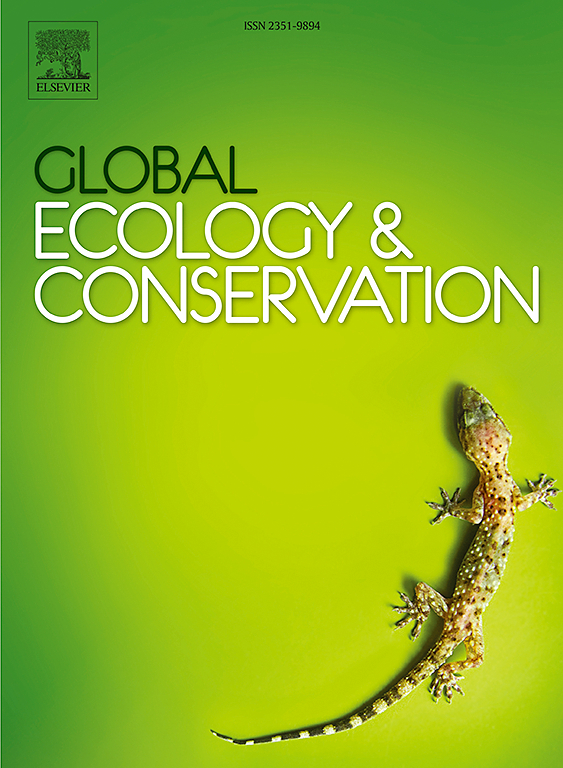Restoration plantations accelerate recovery of fungal communities of course woody debris in southern Costa Rica
IF 3.5
2区 环境科学与生态学
Q1 BIODIVERSITY CONSERVATION
引用次数: 0
Abstract
Fungi are essential to forests because of their role in the nutrient cycle as the primary decomposers of woody debris. Anthropogenic disturbances threaten forest ecosystems and reduce fungal diversity, changing the way carbon moves through the ecosystem. We experimentally investigated the effectiveness of two forest restoration treatments at recovering old-growth forest fungal communities and the relative importance of direct and indirect exposure of woody substrates to large insects for subsequent fungal colonization in a tropical premontane landscape. Restoration treatments consisted of 17–18-year-old, 50 × 50 m plantation and natural regeneration plots compared to nearby reference forest plots. We introduced three Inga edulis logs into each restoration and reference plot (nine logs/site; five sites) and applied the following treatments: 1) control logs open to the environment, 2) logs enclosed in cages to exclude arthropods >2 mm, 3) logs enclosed in cages and drilled with holes to mimic wood-boring arthropods. After one year, we extracted samples from the logs, describing their fungal communities using metabarcoding. Fungal community composition in logs from plantations resembled that of reference forests, while logs in natural regenerations did not. Limiting arthropod access diminished fungal richness in plantation treatments and reference forest by ∼19 %, suggesting that arthropods play a role in facilitating fungal colonization. Results suggest that the biotic and abiotic processes of tropical forests impacting fungal colonization and dispersal are effectively restored through restoration plantations in less than 20 years when remnant forest patches are present nearby, a shorter timeframe than that of natural regenerations.
求助全文
约1分钟内获得全文
求助全文
来源期刊

Global Ecology and Conservation
Agricultural and Biological Sciences-Ecology, Evolution, Behavior and Systematics
CiteScore
8.10
自引率
5.00%
发文量
346
审稿时长
83 days
期刊介绍:
Global Ecology and Conservation is a peer-reviewed, open-access journal covering all sub-disciplines of ecological and conservation science: from theory to practice, from molecules to ecosystems, from regional to global. The fields covered include: organismal, population, community, and ecosystem ecology; physiological, evolutionary, and behavioral ecology; and conservation science.
 求助内容:
求助内容: 应助结果提醒方式:
应助结果提醒方式:


